6 min read
What are the disadvantages of electric heating?
The energy crisis and extreme price volatility in fossil fuel markets has had a dramatic impact on the cost of living for many homeowners, and as a...
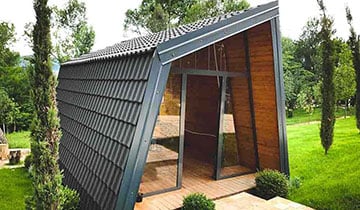
According to the Rated People Home Improvement Trends Report 2022, additions such as a self-contained annex or a garden room are becoming increasingly attractive to buyers, and have the potential to add over £11,000 of value to your home.
Garden rooms come in various shapes, sizes and have many different uses, but what is the best way to heat them considering that they tend to be used all year round? This article will walk you through different options available from electric heating to wood burners so you can make an informed decision if you are thinking about adding a garden room to your property.
Garden rooms are built on the grounds of your home and stand-alone rather than connected to your home. Since the pandemic, garden rooms have seen big growth which could be attributed to more people working from home than before. Even though garden rooms are more associated with home offices, these stand-alone structures are also used as entertaining spaces, playrooms for the children or a place to relax.
Most garden rooms are made from solid wood but there are also composite wood, glass and brick alternatives. However, one of the most important things to think about when planning a garden room is where it will be located and how often it is going to be used. Keeping your garden room warm enough during the winter and cool enough in the summer will influence how often you use it. If you want to use the garden room all year-round, double glazing, insulation as well as how you heat it, will play a big part in the specification you go for.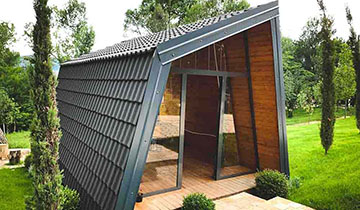
When it comes to heating your garden room, you have some great options available. It is important to note that if you plan to use electric to heat the space, you will need to get a Part P registered electrician to make any connections to the mains. You can also install solar panels to power your garden room. However, not only do you need an ideal location to capture the sunlight, but you also need to consider a pitched roof for the solar panels to be installed on. Why does this matter? By having a pitched roof, you could exceed the height limit specified within permitted developments and may require planning permission.
Right then. Onwards with the heating options. This is not an exhaustive list, there are plenty more out there, but these tend to be the most popular.
Electric Radiators and Panel Heaters
Electric radiators and panel heaters offer a cost-effective heating option for garden rooms which can be installed on the wall or as standalone mobile units. Electric radiators can come with dry elements or thermal fluid such as oil.
Electric radiators such as ThermoSphere’s Oil Filled Radiator and the Glass Panel Heater, heat spaces by using a combination of convection (heating the air around them) and radiant heat. Convectors such as Dimplex’s ML Convector Heater only uses convection to warm the space. This often causes the air in the garden room to feel drier and ‘stuffy’ but can be a quick and cheaper way to get heat in the space.
With most electric radiator models, the heat output is controlled with an inbuilt thermostat which means you can easily control the warmth of the garden room which also helps keep running costs to a minimum.
Electric Underfloor Heating
No matter what floor finish you want for your garden room, you’ll be able to have electric underfloor heating, and with it come a heap of benefits. Here’s just a few:
Comfortable heat: Underfloor heating helps to keep humidity in the air which is then distributed evenly throughout the room creating comfortable heat rather than the ‘stuffy heat’ you can get when warming the space with convector panel heaters.
Design freedom: Wall mounted electric radiators and panel heaters not only limit wall space but also limit the usable floor space around them. Underfloor heating removes this conundrum and provides more usable space for you to design your garden room with greater flexibility.
Great efficiency: Electric underfloor heating operates at lower temperatures and is 100% efficient at point of use. Every joule of energy paid for is used at the exact point where the heat it is required.
If you do decide electric underfloor heating is for you, it is worth reading 'What you need to know before installing electric underfloor heating’ blog. It gives you all the tips you need from choosing the right system through to installation guides.
The majority of manufacturers offer a choice of output which includes 100W/m², 150W/m², and 200W/m². If you have a well-insulated garden room, then 100W/m² could suffice. The only difference is how quick they respond. The higher the output, the faster it will heat the space.
If you want an idea of running costs for your electric underfloor heating, take a look at the Running Cost Calculator.
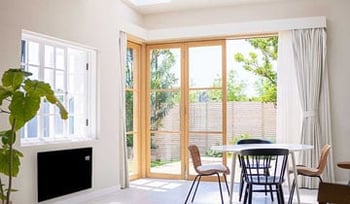
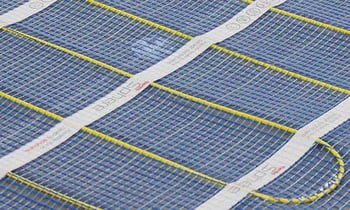
Wood Burner
Wood burners perform well and look great. If you can find a sustainable fuel source, they are even carbon neutral. Once they get going, they warm the space quickly and retain the heat well. A good wood burner isn’t cheap and then you have the installation cost to consider too.
If you are going to install a wood burner, you must ensure that a HETAS engineer does it so that it’s installed safely. Once the wood burner is installed, your installer should provide you with a HETAS Certificate of Compliance (Building Regulation Compliance Certificate) either from the installer directly or via the post once the installation is registered online by the installer.
Gas Heaters
Even though these are slightly more traditional, gas heaters offer an easy way to heat your garden room when you don’t have a source of power. Because gas heaters are portable you don’t incur any cost when it comes to installation. However, they are bulkier than many other options because of the gas cylinder.
To use a gas heater, you will need to make sure that your garden room is well ventilated when it is on because you don’t want condensation and fumes building up. You’ll also need to purchase a carbon monoxide alarm in case of any leaks.
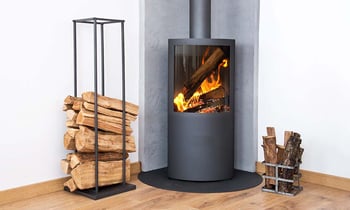
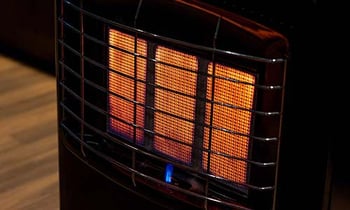
How big is your garden room going to be?
A small garden room that’s used as an office will require less heating than a larger space that will be used as a garden gym.
How often will you use the garden room?
Controlling your heating remotely using smart technology can be very convenient if you are using the space on an ad hoc basis. If you are going to be using it more regularly as a 9-5 office space, then a simple programmable control will do the trick.
Is your garden office well insulated?
Most garden rooms in the UK come with insulation in the floor, roof, and walls. Insulation not only helps you to keep warm in the winter, but it also helps to keep you cooler in the summer.
The performance of insulation is measured by its u-value (the rate heat passes through the material). When looking at a garden room’s specification, check out the u-value. The lower the value the better it performs. Why does this matter? With a lower u-value your garden room will retain heat better which means it will cost you less to heat the space.
What is the aspect of the garden room?
How much solar energy your garden room absorbs will influence the internal temperature as well as the amount of glazing it has.
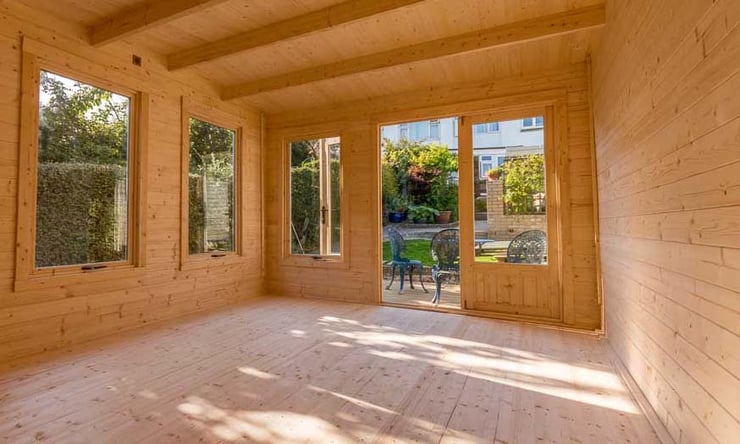
If you have the space to include a garden room, it can be a great investment. With so many designs available, there are garden rooms available to match all types of tastes. Remember to think about the long-term use of the space because it will influence your decision to include power or not. If you take the power route, then electric heating is a solid option for those colder winter days if you are using it regularly.
If you have any questions about electric heating for your garden room, please contact our team who are always on hand with helpful advice that can save you both time and money.

6 min read
The energy crisis and extreme price volatility in fossil fuel markets has had a dramatic impact on the cost of living for many homeowners, and as a...
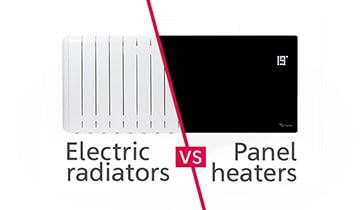
5 min read
In this blog we run through the difference between electric radiators and panel heaters. If you are thinking about giving your home heating a bit of...
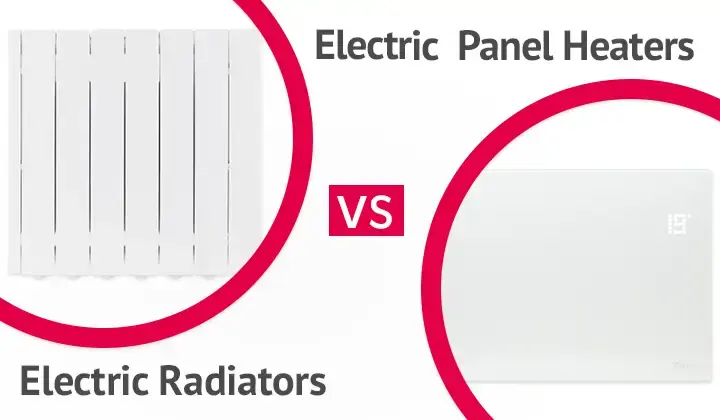
18 min read
If you’re in the process of looking into installing electric radiators or panel heaters for your next project, this article could be just the thing...